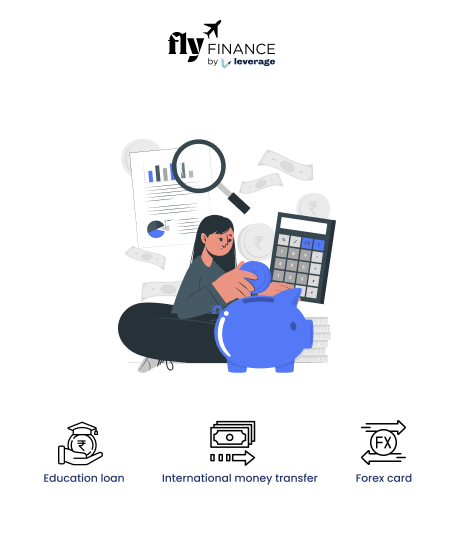The term “CC full form in banking” often confuses students exploring financial terms. In most cases, it stands for Credit Card, a tool that allows you to borrow money for purchases and repay it later.
However, “CC full form in banking” can also refer to Cash Credit. It is a facility designed for businesses to manage short-term financial needs. This blog simplifies meanings, purpose, limits, interest rates, and more.
Table of contents
What is the Full Form of CC in Banking?
In banking, “CC” typically means Credit Card for personal use. Banks like SBI, HDFC, and ICICI issue credit cards to individuals, enabling them to shop, pay bills, or book travel tickets.
Alternatively, “CC” stands for Cash Credit. It is a loan option that supports businesses in covering operational costs and fulfils working capital requirements.
- CC- Credit Card
- CC- Cash Credit
Both serve distinct purposes, but they share a common goal: providing access to funds when needed.
Full Form of CC as Credit Card
A Credit Card allows you to borrow money from a bank for purchases, with repayment due later. Many banks offer cards to individuals who fulfil credit card eligibility, including students, businessmen, working professionals, etc, to manage expenses like books, gadgets, or travel.
Purpose of a Credit Card
Credit Cards provide convenience and flexibility. They help you pay for immediate needs like online courses or hostel fees. You don’t have to worry about waiting for pocket money or savings.
- For students abroad, they help cover travel or emergency costs.
- Working professionals can manage bill payments, do shopping, or book business trips.
- For homemakers, credit cards simplify household expenses—groceries, utility bills, or school fees—easing monthly budgeting.
- For senior citizens, CCs offer a safety net for medical bills or unexpected costs, reducing reliance on fixed pensions.
Borrowing Limits on Credit Cards
Banks set credit limits based on your profile, such as income or credit history. Here’s a look at the top banks in India and their typical ranges:
| Bank | Credit Limit Range | Cash Withdrawal Limit |
| SBI | INR 10,000 to INR 50,000 | 40% to 50% of credit limit |
| HDFC | INR 25,000 to INR 5 lakh | 20% to 40% of credit limit |
| ICICI | INR 20,000 to INR 3 lakh | 30% to 50% of credit limit |
| Axis Bank | INR 25,000 to INR 4 lakh | 20% to 30% of credit limit |
| Kotak Mahindra | INR 20,000 to INR 3 lakh | 30% to 40% of credit limit |
| Punjab National Bank | INR 15,000 to INR 2 lakh | 25% to 40% of credit limit |
| Yes Bank | INR 30,000 to INR 5 lakh | 20% to 30% of credit limit |
Make sure to keep credit card cash withdrawal limits in mind. Banks allow you to withdraw only a percentage of your credit limit (typically 20% to 50%).
For example, on an INR 50,000 SBI card, you might access INR 20,000 to INR 25,000 in cash. Avoid over-borrowing, as cash withdrawals often carry higher interest rates and fees.
Interest Charged on Credit Cards
Banks charge interest on credit cards if you don’t repay the full amount by the due date, typically 20 to 50 days after your billing cycle ends. The rate ranges from 2% to 3.5% per month, translating to 24% to 42% annually, depending on the bank and card type.
For instance, SBI might charge 3.5% monthly (42% yearly), while HDFC charges 2.5% (30% yearly) for student cards. Interest applies only to the unpaid balance, not your entire credit limit.
Suppose you spend INR 10,000 on your Canara Bank student credit card with an INR 20,000 limit and repay INR 6,000 by the due date. Interest accrues on the remaining INR 4,000. At 3% monthly, that’s INR 120 extra in the first month, growing if unpaid.
Cash withdrawals attract immediate interest—no grace period applies. For example, withdrawing INR 5,000 from an Axis Bank card might cost INR 150 in fees plus daily interest until repaid. Late payments add penalties (INR 500 to INR 1,000) and hurt your credit score, making future loans harder to get.
Also Read: Foreign Transaction Fees on Credit Cards: Check How They Work & Ways to Avoid Them
Full Form of CC as Cash Credit
Cash Credit is a loan facility for businesses, allowing them to withdraw funds up to a set limit. It’s not for personal use but supports companies in managing daily operations, offered by various banks like PNB and Axis Bank.
Purpose of Cash Credit
Cash Credit addresses working capital requirements. It funds businesses that need credit/ loans for short-term liabilities like inventory, rent, or salaries.
- Cash Credit ensures businesses pay suppliers or staff even during slow sales.
- It funds bulk purchases, like a shop stocking up for festivals.
- Cash Credits are like emergency buffers and cover unexpected costs, such as equipment repairs.
- Businesses can withdraw cash credit as needed, unlike fixed-term loans.
Borrowing Limits on Cash Credit
Borrowing via Cash Credit works like a flexible overdraft. Banks approve a maximum limit based on your business’s turnover, assets, or creditworthiness.
You withdraw only what you need, when you need it, and repay at your pace, with interest charged solely on the used amount.
For example, if a business gets a cash credit of INR 10 lakh limit from SBI but withdraws INR 3 lakh to buy stock, it pays interest only on INR 3 lakh.
Repayments replenish the limit, allowing repeated borrowing within the sanctioned amount. Here’s a table of borrowing limits from top Indian banks:
| Bank | Borrowing Limit Range | Basis | Key Note |
| SBI | INR 5 lakh to INR 50 lakh | Business turnover | Wide range for small to medium firms |
| HDFC Bank | INR 2 lakh to INR 25 lakh | Cash flow, collateral | Quick approval for growing businesses |
| ICICI Bank | INR 3 lakh to INR 30 lakh | Revenue, credit history | Flexible for seasonal needs |
| Axis Bank | INR 10 lakh to INR 1 crore | Asset value, turnover | Higher limits for established firms |
| Punjab National Bank | INR 1 lakh to INR 10 lakh | Turnover, security | Affordable for small traders |
| Bank of Baroda | INR 2 lakh to INR 20 lakh | Business performance | Popular in rural and semi-urban areas |
| Kotak Mahindra | INR 5 lakh to INR 40 lakh | Financial statements | Suits medium-sized enterprises |
Interest Charged on Cash Credit
Banks charge 9% to 15% annually on Cash Credit, but only on the amount withdrawn, not the full limit, making it cost-effective compared to term loans.
The rate varies by bank, loan type (secured or unsecured cash credit), and the business’s risk profile. For example, a secured Cash Credit from PNB might start at 9%, while an unsecured one from Kotak Mahindra could reach 15%. Interest accrues daily and compounds monthly, calculated on the outstanding balance.
Additional costs may apply to cash credit borrowing. Check the table below for details.
| Cost Type | Range | Details |
| Processing Fees | 0.5% to 2% of limit | E.g., INR 5,000 on INR 10 lakh limit, paid upfront |
| Renewal Fees | INR 1,000 to INR 10,000 yearly | Charged to extend the facility annually |
| Late Payment Penalty | 1% to 2% of overdue amount | Added to interest; may reduce limit if delayed |
| Rate Adjustment | Repo (6.5%) + 3% to 8% margin | Based on RBI repo rate and creditworthiness |
Secured vs. Unsecured Cash Credit
Cash Credit comes in two forms- secured and unsecured. Check out the table of differences below.
| Aspect | Secured Cash Credit | Unsecured Cash Credit |
| Collateral | Needs assets like property or stock | No collateral required |
| Interest Rate | Lower (9% to 12%) due to security | Higher (12% to 15%) due to risk |
| Approval | Slower, requires asset checks | Faster, based on business health |
| Limit | Higher, linked to asset value | Lower, tied to performance |
Also Read: Differences Between Credit Card And Debit Card: Key Differences Explained
Tips to Use CC Wisely
Using “CC” wisely—whether Credit Card or Cash Credit—means managing borrowing to avoid financial strain. Smart habits ensure you or your family benefit without falling into debt traps.
So, now that you know the full form of CC in banking, check out the tips to use CC wisely:
Tips to Use Credit Cards Wisely
Credit Cards offer convenience but require discipline to keep costs low. Here’s how different individuals can use them effectively:
- Students: Set a budget for books or travel; avoid cash withdrawals due to high fees.
- Businessmen: Use for small expenses or rewards; clear dues fully to skip interest.
- Working Professionals: Pay bills on time; leverage cash back without overspending by using the best cash-back credit cards in India.
- Senior Citizens: Limit use to emergencies; check statements to avoid hidden charges.
- Homemakers: Track grocery spends; opt for EMIs only if repayment is certain.
Tips to Use Cash Credit Wisely
Cash Credit supports businesses but needs careful handling to maintain cash flow. Here are practical tips for businesses:
- Small Businesses: Borrow only for urgent needs; repay quickly to lower interest.
- Medium Firms: Use for inventory during peak seasons; avoid maxing out the limit.
- Family-Run Ventures: Align withdrawals with sales cycles; prioritize education funding.
- Retailers: Monitor daily balance; use surplus to reduce outstanding amount.
- Startups: Plan repayments with revenue; negotiate lower rates with banks.
To sum up, the “CC full form in banking” splits into two: Credit Cards for personal use and Cash Credit for business needs.
Both offer borrowing solutions, but they serve different purposes. Indian students benefit from understanding these—whether managing their expenses. Check out the FAQs for more information.
FAQs
CC stands for Credit Card for individuals, letting you borrow money for personal expenses. It also means Cash Credit for businesses, providing funds for short-term operational needs.
In bank details, CC refers to a Credit Card account for personal spending or a Cash Credit account tied to a business, offering flexible borrowing options.
A Credit Card limit ranges from INR 10,000 to INR 5 lakh, depending on your bank and profile. A Cash Credit limit varies from INR 1 lakh to INR 1 crore, based on business turnover or assets.
Yes, you can withdraw cash from a Credit Card up to 20% to 50% of your limit, but it incurs high fees and interest. For Cash Credit, businesses withdraw funds as needed within the approved limit.
A Credit Card loan works well for convenience if you repay on time, but high interest makes it costly otherwise. Cash Credit benefits businesses by supporting cash flow, though over-borrowing risks debt.
For Credit Cards, banks set limits like INR 10,000 to INR 50,000 for students or up to INR 5 lakh for others. For Cash Credit, limits range from INR 1 lakh to INR 50 lakh or more, tied to business needs.
Yes, you can hold multiple Credit Cards from different banks if you qualify. For Cash Credit, businesses typically maintain one account per bank, but multiple accounts are possible with strong financials.
Credit Cards charge 24% to 42% annually (2% to 3.5% monthly) on unpaid balances. Cash Credit rates range from 9% to 15% annually, applied only to the withdrawn amount.
You can use a Credit Card at an ATM for cash withdrawals, though it attracts immediate interest and fees. Cash Credit isn’t used at ATMs; businesses access it via bank accounts.
Credit Cards allow cash withdrawals of 20% to 50% of the limit (e.g., INR 20,000 on a INR 50,000 card). Cash Credit has no specific cash withdrawal cap—businesses use the full sanctioned limit as needed.
To learn more about education loans, the best bank accounts for students, forex, banking experience for global students, or international money transfers, reach out to our experts at 1800572126 to help ease your experience with studying abroad.
Follow Us on Social Media





























